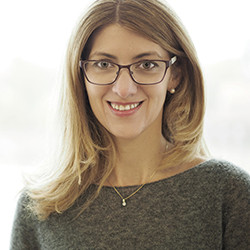Food decrypting app for CHO calculation
Some food labels provide information on the amount of carbohydrates in the product, others don’t. But in both cases shopping, cooking and correctly evaluating the resulting need for insulin remains a real headache for diabetic patients, even with the many guides and strategies that can be found across the Internet. This might soon change with a few taps on a smartphone screen. Have you ever been tempted or gave in to taking a picture of a mouthwatering dish in a fine gastronomic restaurant? What the EU-backed project GoCARB (Type 1 Diabetes Self-Management and Carbohydrate Counting: A Computer Vision based Approach) proposes is to turn this practice into a habit that could change the quality of life of people suffering from diabetes. From a simple picture of a meal, the GOCARB app can extract precise information about the amount of carbohydrates (CHO) it contains. ‘In a typical scenario, the user places a credit card-sized reference object next to the meal and acquires two images using his/her smartphone. The first image is acquired above the plate at a distance of 30-40 cm, while the second is at about 20 degrees from the vertical axis crossing the centre of the dish,’ explains Dr Stavroula Mougiakakou, who coordinated the project for the University of Bern. ‘The different food items on the plate are automatically detected, segmented and recognised, while their 3D shape is reconstructed. By using the shape, the segmentation results and the reference object, the volume of each item is then estimated. Finally, the CHO content is calculated by combining the food type with its volume, and using a nutritional database.’ GOCARB has the potential of completely changing the daily life of patients with diabetes, who need to estimate the prandial insulin dose required in order to compensate for the effect of their upcoming meal, several times a day. ‘A recent study has shown that a substantial number of adult individuals with type 1 diabetes estimate prandial insulin needs inappropriately, even those with the most experience,’ points Dr Mougiakakou. ‘Making these estimates is a complex and time-consuming task, which depends on the carbohydrate content of the upcoming meal, pre-meal glucose concentration, insulin-to-CHO ratio, insulin sensitivity, and the insulin already present in the patient. Imprecise CHO counting can lead to either under- or overestimation of prandial insulin, in turn resulting in non-physiological post-prandial hyper- or hypoglycaemia and poor glycaemic control. Clinical studies have shown that an inaccuracy of ±20 g in CHO counting significantly impacts the postprandial glycaemia level.’ Although the app — codename m-Health — is not publically available yet, its accuracy and ease of use has already been tested on 19 adult volunteers with type 1 diabetes. Six mixed food dishes served by the restaurants of the Bern University Hospital were presented to each volunteer, who was asked to count the CHO content of each meal before repeating the procedure but this time using GoCARB. The subjects then completed a questionnaire at the end of each session to describe their user experience. ‘The preclinical study indicated that the system is able to estimate the meal’s CHO content with higher accuracy than the patients themselves. Furthermore, the feedback gathered by the participants showed that the system is easy to use, even for non-smartphone users,’ says Dr Mougiakakou. The GOCARB system was developed based on requirements for an error margin of less than 20 grams and minimum user interactions. This was made possible thanks to a visual dataset of over 5 000 images which includes a broad spectrum of non-packed central European foods of various shapes. The only assumptions made by the system is that the plate is round, that the food items are not occluded, and that only one plate is present in the image. Reaching beyond diabetes The team is now investigating the effectiveness of the system in improving glycaemic control. A clinical trial is taking place at Bern University Hospital under the management of the Department of Endocrinology, Diabetes and Clinical Nutrition. It involves individuals with type one diabetes under sensor-augmented pump therapy. ‘We are very excited and curious to see the results of this study,’ Dr Mougiakakou enthuses. What about a future commercialisation? ‘As an academic research group, our first priority is to optimize the algorithms behind the system in order to improve the system’s accuracy,’ Dr Mougiakakou notes. ‘Transforming the developed prototype into a product is something we already discuss with our industrial and clinical partners, and it will be done when we are convinced that system meets user needs. Considering the promising results we have so far, I would be optimistic and say that this will be done in the near future.’ Dr Mougiakakou is also conscious of the potential of the app beyond diabetes with, why not, a similar app to know the number of calories or identify allergenic ingredients. ‘This is certainly something we can imagine. Estimation of other macro-nutrients and calories is of importance even for diabetes self-management, since there is increasing evidence that fat and protein can influence the glucose profile. Therefore, the expansion of the system to a broader nutritional spectrum is definitely in our future plans.’ GOCARB Funded under FP7-PEOPLE. Coordinated by the University of Bern in Switzerland. Project website
Countries
Switzerland

